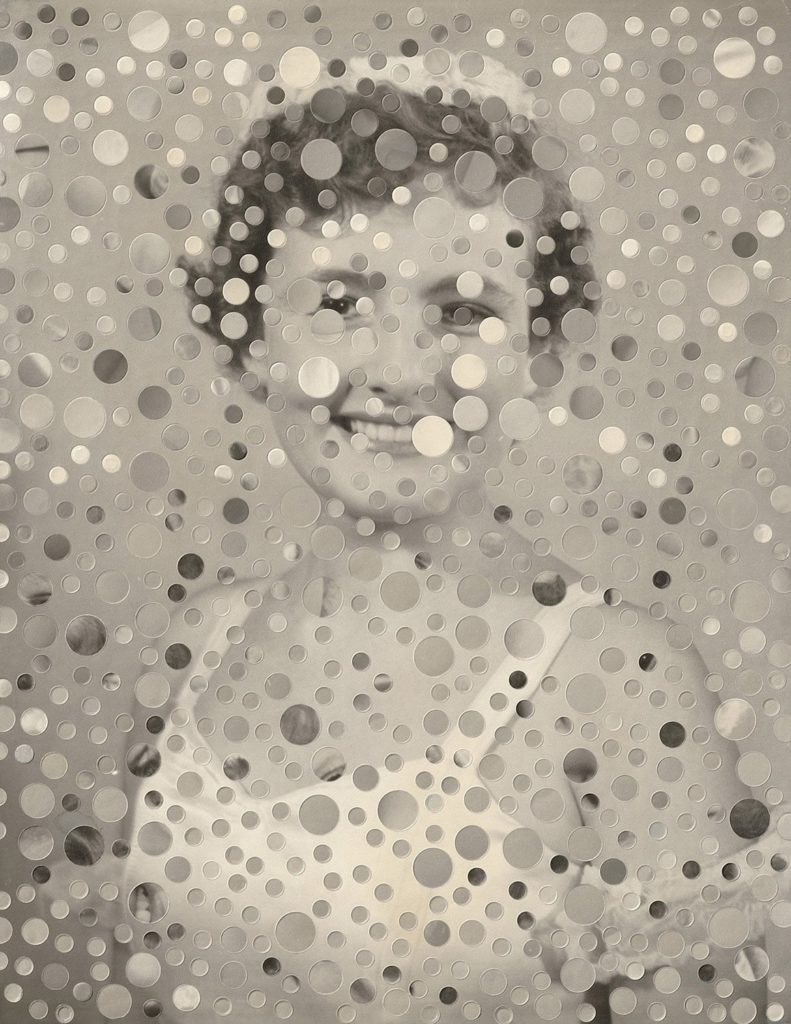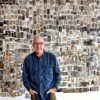Susana Blasco defines herself as a graphic designer, illustrator, collagist and blade sharpener among many other things. She has a very poetical and obesessive approach to her work. As she says on her bio, she loves stones, papers and scissors. Collects slow fires, likes games and wine and has the soul of a sailor. Susana is an artist worth knowing more in depth and that is precisely why we have interviewed her.
TWS –Hi Susana! Can you please tell us something that you’d like our readers to know about you?
SB –I am constantly looking for new ideas, I question everything, and I like to change up my interests and my way of thinking about things. I get stressed out when I think about all the things, I won’t have time to do. I am very strict with myself, and very curious. I’m rarely satisfied with anything I do, and when I am, the feeling never lasts. Only after a few years have passed am I able to look at what I’ve done with more loving and indulgent eyes. I am very tidy, and at the same time very chaotic. I am very patient, and at the same time, very impulsive. I am not at all nostalgic, but I am constantly trying to create fictitious connections with the past. I enjoy solitude, slowness and the meticulous processes involved in making art, to the point that they often interest me more than the final result itself.

TWS –Designer, illustrator, artist, collage freak… how would you order in terms of importance these items in your life? Can these really be separated? or are they just different manifestations of something larger with is Susana and her creative approach to life?
I think that at different points in my life, each of those terms has held a different weight. The importance of each of those aspects of my life has changed, and continues to do so. Letting go and flowing from one to another is what gives me a certain sense of balance and tranquillity. There was a moment when it was clear to me that I was a designer above all else, and that my work with collage and the “artistic” part of my creations was something secondary, almost anecdotal. However, and it might be because of my age, I am increasingly interested in free work, without restrictions, client requirements, or deadlines holding me back. Creating for the sake of creation is what motivates me the most right now, although I wouldn’t want to function like this all the time. In some ways, I need my little doses of all these things: sometimes designing, sometimes collage, sometimes using collage to illustrate concepts, and sometimes, just going where the technique takes me, without thinking about what it means, or why I’m doing it. Obviously, all these terms are not totally separate, they get mixed up and feed off each other.
TWS –How your passion for vintage photography started? What is that specially attracts you about vintage pictures?
SB –Well, in my case, this passion was born at a specific moment that I remember perfectly. When I lived in London, I used to walk through the flea markets and second-hand shops. I have always been into hunting for trinkets and the first thing I do when I visit a city is check out the flea markets, charity shops and other spaces where I can find small objects. On those walks through London I found, in addition to my usual little gadgets, boxes and boxes of old photographs, magazine clippings, and old prints, which I quickly fell in love with. It’s not that I hadn’t seen that type of material before, but at that moment in that grey, rainy, London, full of history, those photographs awakened something in me. It was a kind of capricious impulse at first that made me feel that I had to have those photos, that I needed them. Then, when I began to accumulate and accumulate without any specific purpose, I started to reflect on what you can see in these images, of total strangers, who called out to me to rescue them. I suppose it was the imaginary stories that I told myself, the similar faces, the clothes, that point of resemblance between all of them due to the postures and hairstyles, but at the same time, each one of them was different.

TWS – I’ve read that visiting a John Stezaker exhibition in London’s Whitechapel Gallery connected you instantly with collage. Do you recall why you felt at that time that collage was a perfect fit with you? And how do you feel this idea has changed after so many years: Why collage is a perfect fit for Susana nowadays?
SB –I confess that I tend to get very emotional at exhibitions. I think it’s one of the things I like to do the most, to walk around and let oneself be transported through the pieces, sometimes to where the artist takes you, but many times, most times, to places completely connected to your own mood and your personal life, your experiences, your knowledge. That feeling, for me, is exciting. There have been many exhibitions that have touched me deeply throughout my life. In the case of the John Stezaker exhibition, it was a crucial moment. On a personal and professional level, many things were happening and I had this kind of revelation, catharsis, that prompted me to intervene in photographs. I already knew about collage before that exhibition, but I hadn’t felt so drawn to it. With my vision of the discipline at that time (which I now realize was limited), I thought of collage as a technique full of chaos, chance, imperfections, horror vacui, and yet in front of Stezaker’s pieces I had the opposite perception: subtlety, balance, perfection. I was absolutely fascinated by his work and it was a trigger for me to start making a collage with all those photos that I had been compulsively collecting, which I had piling up in boxes.

TWS – I remember seeing your work (not sure if for the first time) when you made the Antihéroes project? It became viral because of both the simplicity and the power of the images. Was this project the one that made you realize that collage was a possible way of developing your artistic persona?
Not especially, and if it did, it was to make me aware of a path I did not want to go down. Before I did The Antiheroes, I was already working with old photographs and geometric patterns, and it was working in this way that I felt like there was something there I could develop. That process took me to places that interested me, and made me reflect on aspects that I had barely scratched the surface of. Making The Antiheroes was a game. Placing objects on top of photos was fun, quick, and engaging, but it didn’t feel like I was doing anything artistic.
TWS –And, also, how did this project made you rethink your relationship with social media?
SB –As I was saying, I saw that the game was beginning to have an impact on my career and on my portfolio (as a designer too), which I did not expect. Contrary to what one might think, it did not make me feel comfortable. It had an impact, people liked it and I saw that it had enormous possibilities for monetization. But was that what I wanted to do? Was that the work that defined me as an artist? Was it enough of an intellectual or artistic challenge for me? Is success enough of a reason to keep doing something? From the answers to all these questions, I think I drew an important conclusion to maintain a non-toxic relationship with social media: do what you want and what you like, not what others like. You have to free yourself from the tyranny of the like button to be at peace. I decided not to continue with the series, and believe you me, it would have been very easy and profitable to continue. But I stopped because it didn’t make me feel good. Now, from time to time, I play with objects and photos but in another way, and from another point of view.
I am aware of the power of social media and how it affects your work. I am lucky to have many followers on instagram that have been growing little by little. I know that many projects and commissions come to me because people know me through the social networks, and yet I do not want to be a slave to content creation or algorithms. I think the only way to stay sane is to do what your body asks of you. That way, some days you share a lot of things, and other times you spend weeks without posting anything. I am also very aware that one day the account might get hacked, or another social network might become more popular, so I like to think that Instagram is temporary: it is a tool (among others) that works for me right now, but there will come a day when it no longer serves its purpose. And that’s fine.
TWS – There’s a lot of visual poetry in your work. I can see something of Stezaker but also from other artists like Joan Brossa and Jiri Kolar. Which are the artists that you feel that have had impacted you the most on your way of making art?
SB –I always find it very difficult to answer this question because of how my approach to collage has always been, from near-ignorance to learning along the way as I produced my own material. I think there are influences that are undeniable and others that are more subtle, but no less important. Also, what usually happens when I meet an artist who has a job similar to mine, is that I try not to see what they are doing, nor to follow them, and to distance myself a bit from that similar way of thinking in an attempt (I suppose childish) not to contaminate myself, and to continue doing what I feel like, even if it lacks originality or someone has done it before. I cannot fail to mention Isidro Ferrer as one of my great influences, someone that I deeply admire. But there are also others that are not so obvious, like Chuck Close, Boltanski, Jean Arp and Esther Ferrer. Also other contemporary artists whose work I really like and follow closely are Lola Dupre, Katrien De Bauwer, Andrea Burgay, Eugenia Conde, Alma Haser or Alicia Martín.

TWS – Other big thing in your work is materiality. From the texture and vintage feel of the images you select, to the physical nature of some of your artworks that have almost a sculptural feel or your large scale installations. Can you expand on the role of materials in your work?
SB –Material is super important in my work. In fact, many times what most attracts me to the photographs is not what is represented in the images, but how the paper has aged, the smell, the folds, the wrinkles, the colour… The physicality of the material attracts me a lot and how the passage of time has left its mark on those images. This need to connect with the reality of worn materials has meant that for a long time I only worked with the original photos, since working with reproductions made the process meaningless. It is true that along the way I have discovered other ways of working with that materiality and that it is precisely in the most sculptural pieces, or those that come out of paper or two dimensions, where I find more interest lately. I’m also interested in the search for materials to be able to carry out works of larger formats, or even murals.



TWS – I can see the signs of obsession in your approach to art. Is this right? How do you feel yourwork and obsession are related? Also, with what are you obsessed with lately?
SB –Yes, I am terribly obsessive. When something interests me, I squeeze it until it is exhausted. Lately I am obsessed with large format photos that are very difficult to find, with circles and the tools to make them perfect and also on a more conceptual level, I am obsessed with bringing that distortion and illegibility of photographs through geometry to other materials and formats, in representing memory and fragmentation in other ways beyond collage.
Lately I have also been captivated by contact with real people and the stories associated with the photos. I have been lucky enough to work on various collective projects with grandmothers who contributed their photos and memories. And after so many years working with the fictional memory of unknown people, this clash with real stories, told in the first person, has shaken up my world a bit. We’ll see where it takes us.
TWS –I can see you as a compulsive collector? How are you on the source hunting side of collage?
SB –I’m not sure if collector is the word, because I don’t treasure my finds, I accumulate them. I keep the photos in large boxes vaguely classified according to very different aspects that can change over time, depending on the use I am going to give them. Right now, for example, my files are organised by photo size, but other times they have been separated by genre, decade, or even by colour. When it comes to locating the material, of course what I like the most is walking through flea markets, although I also have daily alerts on online second-hand sales websites. Every week I buy new photos and this search for material, I must admit, is one of the parts of the process that I like the most.
TWS –Is there something that you’d love to try and explore (art-wise, I mean!) that you haven’t done yet? What would you like to do next that you haven’t done yet?
SB –I have a long list with lots of things. Lately I’ve gotten obsessed with fabrics, glass, different types of resins and organic plastics. I’m experimenting a lot although I haven’t managed to give it the right shape yet. And the list of materials I want to play with is long.
TWS – What’s your own personal definition of collage?
SB –Collage is the process of discovery, selection, fragmentation, and connection of pieces, with an artistic intent, to create a unified work that must be interesting enough to justify the destruction necessary to create it.
Find more about Susana Blasco on her website or Instagram













